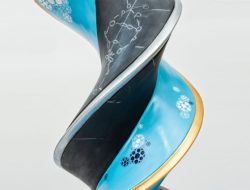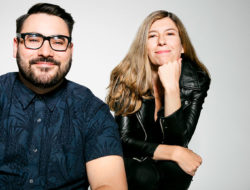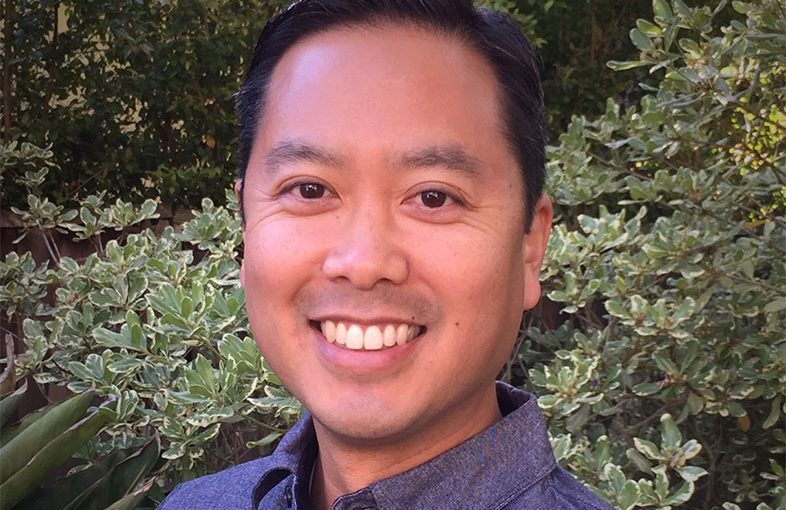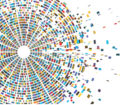Ping Yeh is the co-founder of StemoniX, a local startup that uses 3-D printing to create stem cells from skin cells at high volumes, which pharmaceutical companies can use to test treatments for cancer and other diseases.
Yeh himself is a cancer survivor. His story of overcoming the disease and how the experience led him to found StemoniX won over the crowd at EvoNexus Demo Day this spring, earning his team a dinner with Qualcomm execs and investors.
Congratulations on winning EvoNexus Demo Day! How did the follow-up dinner at the Qualcomm Museum go?
Thank you! The follow-up was surreal in that we started with just an idea, and now we are seeing products and services take shape that can help millions of lives. We can help better medications be discovered faster and cheaper. We can also help individuals find medications that will be most effective, and minimize dangerous side effects. We discussed this future and the response was well received.
You were very open at Demo Day about your struggle with Hodgkin’s lymphoma and how you beat and overcame it. Can you share with us how this experience is linked to you founding StemoniX?
I was resistant to my chemotherapy, and underwent many toxic side effects without taking away my cancer. My very competent physicians then proposed switching to a stronger chemotherapy that would likely have had even more toxic side effects, making it even harder for my body to manage the cancer. In addition, the medication could be toxic for my heart or other essential organs.
I was faced with a stark choice: Would this new treatment save me, or kill me? The physicians thought it would more likely help me, but even they admitted they couldn’t be sure, as different medications affect different ethnicities, and even individuals, differently. I wished there was more accurate and personal information that could’ve helped me make that choice.
Thankfully, I survived, but I learned that a lot of medicine is about making educated guesses. I wondered whether we could increase the education to decrease the guessing.
StemoniX is now accelerating forward with a brilliant team of equally passionate physicians and scientists to make this a reality.
You mentioned how drugs and treatments meant for a diverse population are tested on only a small, homogenous population. Why does this happen? And can you explain to us how StemoniX’s technology is addressing this?
Early in the drug discovery process, animals are often used to predict effects on humans, but we have learned that those models are often poor predictors.
Initial human trials are typically small, to minimize risk, and that limits our insights. We’re often unaware of certain effects until a larger population uses the drugs, and we don’t understand how ethnicity or individual genetics might cause the drug to function differently. Meanwhile, many drugs fail this limited testing, losing billions of dollars and decades worth of drug development.
Performing more expansive testing on diverse human cells would help with some of these challenges, but there were limitations in having such cells to test. In addition to the controversy around stem cells, there haven’t been good methods to obtain high volumes of quality cells, making testing incredibly limited, expensive, laborious, and prone to quality issues.
Eight years ago, a Nobel Prize–winning technique was developed for creating stem cells from skin cells, removing much of the controversy. Researchers at UC San Diego and other premier institutions found ways to create organ cells from those stem cells. StemoniX has created a process to create these organ cells at high volume and quality for low cost.
Having access to low-cost stem and organ cells enables human cell testing, personalized medicine testing, and even cellular therapies.
I met a woman in the audience who told me how invasive and difficult it was in the past to extract and donate stem cells. Does StemoniX make it easier for people to do this?
At StemoniX, we don’t even have to extract stem cells! We convert them from noninvasive samples such as skin. Once converted, we can essentially grow them in perpetuity as an infinite resource.
Is personalized medicine the future? When can the average person expect to have access to it?
Personalized medicine has to be the future if we want increased success rates in treatment.
Already, at the Finland Institute for Molecular Medicine, resistant leukemia patients are often cured by determining what the best personalized treatment for them is. FIMM does this by extracting a patient’s cancer cells and testing numerous possible combinations and concentrations of existing drugs. Not only do they often cure patients who have failed other therapies using this method, they perform this testing in a couple of days!
Second, Northwestern and Stanford researchers recently showed how they can determine ahead of time whether certain breast cancer patients’ treatment plans will lead to heart failure, which occurs in 8 percent of treated patients.
I want my friends and families’ health decisions and treatments to be based on that level of personal and predictive insight. At StemoniX, we believe making medicine personal leads to optimal choices, thereby being a more effective and lower-cost way to treat a patient. We want patients to get the best treatment the first time.
Tags: People






























